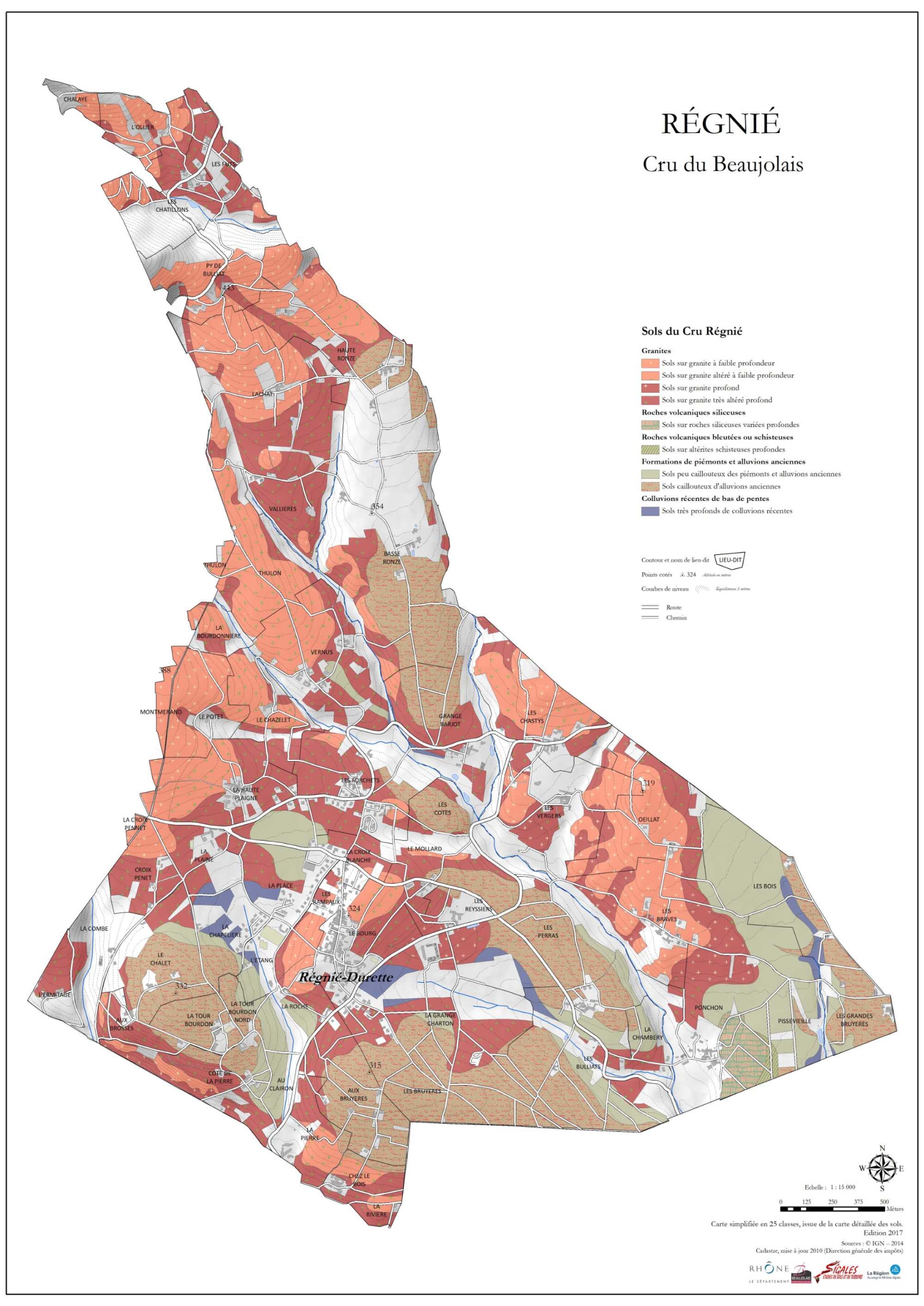Régnié
INSPIRING WINES FOR THE CRU WITH TWO SPIRES
The village of Régnié-Durette is especially noteworthy for its church with two spires (built in 1867 based on the design by Pierre Bossan, the architect who later built the Basilica of Notre-Dame de Fourvière). The vines are planted on slopes at an average of 350 metres in altitude, facing southeast. This appellation’s wines are light, easy-to-drink and rich in mineral elements, very aromatic, maturing quickly.
The Régnié appellation: an overview
Œuvre de près de 120 vignerons, Régnié a rejoint les 9 autres des crus du Beaujolais en 1988, lorsque cette appellation fut officiellement reconnue. Le cadet de la famille a pourtant beaucoup à nous offrir. Sa situation géographique favorable, entre ses deux frères Brouilly et Morgon, donne des vins au fruité unique.
Pour les personnes désireuses de mieux connaître l’univers du vin, les vins de Régnié demeurent accessibles et une excellente entrée vers une meilleure compréhension des crus du Beaujolais.
- CommuneRégnié-Durette, Lantignié
-
Lieux-dits
- LA BASSE RONZE
- LA HAUTE PLAIGNE
- LES CHASTYS
- VALLIÈRES
- LA PIERRE
- LES REYSSIERS
- AUX BRUYÈRES
- OEILLAT
- CROIX PENET
- LES BOIS
- LES BRAVES
- Altitude350 metres
- Soilgranite (64%), piedmont deposits (34%)
- Surface Area550 hectares
Characteristics
of Régnié appellation
- Tastingsuppleness and fruit
- Tasting occasionaperitif, brunch, picnic
- NoseRaspberry, redcurrant, plum, blackberry, blackcurrant with spicy, mineral notes
- Culinary suggestions
Veggie burgers, seafood paella
- ColourCherry or ruby red
- Serving temperature12-14°C
- PalateRed fruit, freshness and structure, delicate tannins
Learn more
about the Régnié appellation
A winegrowing history
Régnié wines are named after this charming commune with its magnificent double-spired church (designed by the architect who built Notre-Dame de Fourvière basilica) nestled on the road to the Loire Valley.
Its strategic location meant that its wines could be easily transported and marketed as far off as Paris, even as early as the 18th century. The elegant fruitiness – from a gamay grape that draws its resources from early-ripening terroirs – makes for a wine enjoyed by all palates, even the most discerning ones.
An aromatic, easy-to-drink wine
The secret of the success of Régnié wines is their delicious taste, which is apparent even when the wine is very young. However, epicureans who prefer more tannic, structured crus, will also find what they are looking for if they leave this wine to age for a few years.
In fact, this Beaujolais cru gets all its originality from the way it ages. If you’re taking your first steps in the world of wine, buy two bottles of Régnié. Taste one straight away to start learning how to recognise its red and black fruit aromas. You’ll enjoy a supple, fruity wine with a nice long finish.
As for the second bottle, store it in a dry place at 12°C. Continue learning about wine and wait a few years before opening it. Your trained palate and the way the Régnié has developed will allow you to enjoy a wine with refined, mellow tannins, noticeable red fruit aromas and delicate mineral and spicy notes.
A wine to pair with tapas
Thanks to their freshness and affordability, Régnié wines are the perfect accompaniment for evenings with friends. It’s also a good opportunity to introduce your friends and family to wine tasting with this delicious wine that reveals its secrets right from the first sip.
This Beaujolais cru will brighten up your appetizer buffets, where you can serve it with charcuterie, cheese and tapas. But don’t think of Régnié as just an aperitif wine! After several years of cellaring, it is also a good match for leg of rabbit or duck, red mullet filets and spare ribs.
To end on a high note, serve a chocolate delight, preferably topped with red fruit, to set off the wine’s fruity bouquet perfectly and finish the meal in a blaze of glory!



